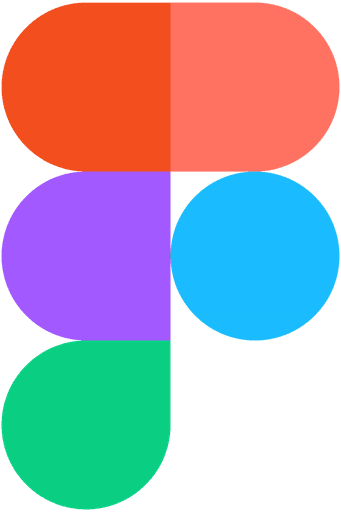Co-Cooking App
FamCook
FamCook enables users to have a stress-free journey of cooking together with loved ones. Through improved planning, communication, preparation and cook-together flow, FamCook makes it easy for families and friends to enjoy the food and company.
Self-Initiated Project
Course Project
Lifestyle
Human Connection
UX Researcher
UX Designer
UI Designer
3 months
Challenge
Imagine having 10 friends over for your housewarming cook-together. After bringing everyone on a group chat and finally agreeing on a time, you also learnt that everyone has a different dietary request, and their cooking skills vary.
How would you organise the party?
The goal of this project is to design a collaborative cooking experience that reduces friction in planning and preparation, while fostering enjoyment and connection among users, making co-cooking an effective way to connect with loved ones.
Results
The success of this project can be measured by task success rate, user satisfaction, user engagement, as well as qualitative feedback from users.
50 %
Improved Task Success
30 %
User Satisfaction
? %
User Engagement
Process
Research & Analysis: I conducted foundational research through user interviews to identify challenges users face in cooking together, and to evaluate current practice of users. Data from the interviews are collected and synthesised using thematic analysis (affinity diagramming) to generate findings regarding user pain points.
In order to further understand the competitive landscape, I conducted a competitive analysis, reviewing current apps on the market, in order to identify best practices and opportunities. The research question comes down to this:
Project Definition: Based on the findings of the foundational research, this project will focus on one research question:
How might we design a collaborative cooking experience that reduces friction in planning and preparation, while fostering enjoyment and connection among users?
Wireframing & Prototyping: After defining the main features of the app, I ideated a range of wireframes using Crazy 8, and designed low-fidelity wireframes to visualize the layout and navigation of the app. A lo-fi prototype was created and tested to gather feedback before further iterations.
Hi-fi Design & Usability Testing: I conducted usability tests with 8 users to validate the design and identify areas for improvement.
Visual Design & Style Guide: I developed a style guide, including colour schemes, typography, and iconography, ensuring consistency throughout the app.
Discovery
I conducted 5 user interviews to learn about their past experiences and practices in organising a group meal, focusing on the challenges and solutions, as well as their expectations for a co-cooking app.
People cook together mainly in three scenarios:
With family members on an almost day-to-day basis;
With people who share the space with them, such as housemates;
With a group of friends on a celebratory occasion.
Based on the interviews, here are some challenges that users encounter, most at the pre-cooking stage:
Pre-Cooking
Keeping track of everyone's dietary requests, allergies and preferences;
Coming up with dishes that cater to everyone’s dietary requests;
Communicating meal ideas and details with group and getting feedback;
Sorting out a list of dishes to ensure that everyone is happy with their options;
Having all the right ingredients ready.
During Cooking
The skill levels of co-cooks vary;
Users' collaboration styles differ;
Major steps are forgotten (burnt turkey, uncooked rice, over-boiled pasta, etc);
Sometimes it gets intense in the kitchen, making it easy to snap at co-cook(s).
Post-Cooking
Sorting out payment;
Cleaning up arrangement.
Define
Due to the scope of this project, it is unlikely that I will be able to offer exhaustive solutions to all challenges— an effective solution to any of the challenges above would make its own project.
Here are some directions in which this project could go:
A personal dietary profile (like a "foodie card") you can share with friends and family, and to find like-minded people
Viability
Self-Limitation
User Privacy
A recipe generator to decide on a list of dishes based on dietary requests, occasions, numbers and existing ingredients
Time-Saving
Environmentally-friendly
Versatility
A communication app for group meals, integrating dietary requests and meal preparation checklist
Comprehensiveness
Viability
Engagement
Social Connection
A co-cooking instruction app for group cooking
Effectiveness
Social Connection
Necessity
Complex logistics
Therefore, we will focus on reducing friction in planning and preparation, and the most effective approach is to build a communication platform where users can share recipe plans.
Note: Accessibility has been one of my biggest concerns from the start, as during the process of cooking, not only users' hands will be occupied, they also need to focus on their main task— cooking. Therefore, this app has to have very clear visual hierarchy, and preferably a voice-control option to avoid having to scroll with oily hands.
Develop
Ideation, Wireframing & Prototyping
Now that I have narrowed down the project goal, I used Crazy Eights to create a range of wireframes to explore the layouts and structures. A lo-fi interactive prototype was then developed based on my wireframes.
Design and Testing
I tested the lo-fi prototype on 4 participants, and gathered insightful feedback regarding the home page and navigation, communication feature, as well as inspiration feature.
I made changes accordingly following the first round of user testing, including:
Used widgets instead of hamburger menu;
Added an information card to educate users on ingredients;
Reduced visual clutter in Meal Plan by removing the calendar;
Added personalised recommendation;
Designed "Inspiration by mood/flavour";
Changed co-cooking interface to a single-screen display rather than a split screen.
This stage of my design was presented to 8 mentors from ADP List, each offering beneficial proposals for enhancement. A recurrent element was that my design, though somewhat "functional", failed to adhere to industry standards and best practices, and lacked consistency.
Deliver
Consequently, I've made substantial modifications to my design, instituting my style protocol and respecting the recognised standard for mobile design.
What's Next?
Test, Test, Test
Moderated user testing to learn about user behaviour, and identify points of user frustration and user confusion, followed with in-depth user interviews to understand the causes;
User analytics to look at user task success rate, error rate, daily active users, user acquisition and user engagement, as well as churn rate, to understand the performance of the product, as well as discovering major usability issues;
A/B testing to test out different versions of screens, such as different copies for onboarding, different interaction features when cooking (e.g. send hearts or real-time haptic feedback) etc, to monitor user engagement and conversion rate.
Improve on Accessibility
The final design was created with WCAG standard in mind. However, I want to also explore features like "distraction-free" mode when cooking, or "hands-free timer" to ensure a seamless user experience. Other functions such as swipe-to-confirm or shake-to-pause for critical actions should also be included.
Microinteraction
I would also like to optimise the microinteractions, making sure user are provided with timely visual feedback that enhances the overall user experience.
Conclusion
FamCook was my very first project as a UX designer/researcher. I struggled with product scope as there were too many problems I wanted to address, but finally learnt the art of prioritising. This project has very limited user data due to it being a self-initiated concept product, but insights from in-depth user interviews and usability testing sessions were critical in creating this user-centered experience to enhance human connection.









